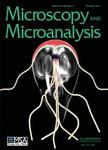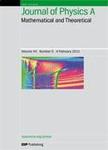版权所有:内蒙古大学图书馆 技术提供:维普资讯• 智图
内蒙古自治区呼和浩特市赛罕区大学西街235号 邮编: 010021
T=题名(书名、题名),A=作者(责任者),K=主题词,P=出版物名称,PU=出版社名称,O=机构(作者单位、学位授予单位、专利申请人),L=中图分类号,C=学科分类号,U=全部字段,Y=年(出版发行年、学位年度、标准发布年)
AND代表“并且”;OR代表“或者”;NOT代表“不包含”;(注意必须大写,运算符两边需空一格)
范例一:(K=图书馆学 OR K=情报学) AND A=范并思 AND Y=1982-2016
范例二:P=计算机应用与软件 AND (U=C++ OR U=Basic) NOT K=Visual AND Y=2011-2016



Given a unitary transformation, what is the size of the smallest quantum circuit that implements it? This quantity, known as the quantum circuit complexity, is a fundamental property of quantum evolutions that has widespread applications in many fields, including quantum computation, quantum field theory, and black hole physics. In this paper, we obtain a new lower bound for the quantum circuit complexity in terms of a novel complexity measure that we propose for quantum circuits, which we call the quantum Wasserstein complexity. Our proposed measure is based on the quantum Wasserstein distance of order one (also called the quantum earth mover's distance), a metric on the space of quantum states. We also prove several fundamental and important properties of our new complexity measure, which stand to be of independent interest. Finally, we show that our new measure also provides a lower bound for the experimental cost of implementing quantum circuits, which implies a quantum limit on converting quantum resources to computational resources. Our results provide novel applications of the quantum Wasserstein distance and pave the way for a deeper understanding of the resources needed to implement a quantum computation.
电话和邮箱必须正确填写,我们会与您联系确认。
版权所有:内蒙古大学图书馆 技术提供:维普资讯• 智图
内蒙古自治区呼和浩特市赛罕区大学西街235号 邮编: 010021

暂无评论